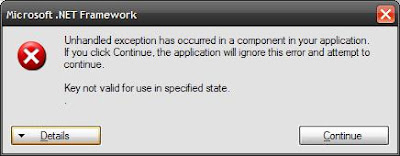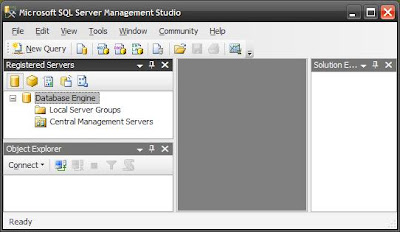Firstly, Agile must work. I'm sure some companies run it very well and reap the benefits.
The business gets flexibility and visibility of technical projects. The adhoc nature of being able to get on without a massive upfront cost of planning, meetings and documentation is surely a developer's dream?
In the interests of impartiality, here is an
excellent video by Axosoft on how it is supposed to work.
Why I am currently unconvinced is based on one company's painful implementation of scrum and the epic volume of time wasting that ensued. The introduction of 'Agile' has been a real eye-opener. It has clearly shown the true colours of people wallowing in implementing processes, arguing over whether we are doing things 'the Agile way'. Rather than enabling the team to self manage it has become micro-management, an irony as it is anything but 'Agile'.
I'm pretty sure everyone is to blame for the scenario -
- Managers for wanting stuff 'now' and circumventing the processes.
- Developers for not pushing back and communicating lost time.
- Everyone for wanting work done quickly (and being prepared to circumvent testing and qa processes).
We're mostly very concious of the creation of technical debt, but this in itself is leading to a negative vibe towards quality. This negativity has propogated from attitudes to discussions and has been self fulfilling in terms of code quality. Every day has become a fight to be allowed to engineer elegent technical solutions
As a Database Professional the standard answer is 'It depends'. That's not to be awkward, it's the truth.
You can have your data now as a one-off run or automated daily in a process.
How effeciently that process runs can have many levels of optimizations
- Have we chosen data types wisely?
- How well is the code written?
- Is it secure?
- Does it scale? Today's data volume and execution plan will not be valid a year from now.
- Is the hardware adequate?
- Is it configured optimally?
Scrum doesn't discourage planning it merely timeboxes it. Our implementation heavily encourages quick wins and the prioritization of asthetically pleasing output over well thought out solutions. In many ways getting everyone together to discuss the next project helps with the realism of how much will be omitted by releasing at the end of a 2 week cycle. To be fair, increasing technical debt due to quick wins can happen anywhere and can not totally be blamed on 'Agile'.
The agility of the team is majorly hampered by other factors too, namely -
- Domain masters. Members of the team who exclusively deal with certain projects/code.
- Zero documentation.
- Minimal code commenting
- Superficial testing (usually only of visual aspects)
- A build/release process that only a couple of senior developers understand.
(Old issues reappear at every release due to extremely poor release management).
The main benefit of Agile is that it has provided is a high level of business visibility (everyone likes to be in the know).
The cost for this has been extremely high however.
For the first 6 months the number of people involved at all stages has been ridiculous.
- The entire team (originally numbering 16) partiticating in 'poker planning', ironically a time estimating task conducted first in story points and eventually (after much debate) in hours.
- The entire team doing Sprint Planning (breaking down tasks into a painfully stupid level of detail)
- The entire team doing Sprint 'reviews' (self congratulatory bleugh...)
The above meetings happen EVERY 2 WEEKS. Rarely do we make a fortnightly release, surely the point of the cycle!
Training is a major point where I feel we have fallen down. Rather than train the team, some senior members attended training and eventually 'certified' as ScrumMasters (theres a parallel with a Rugby 'scrum' here in terms of the style in which early meetings were conducted). 1 informal overview session of knowledge transfer occured and subsequent to that, each planning meeting was used to ram home 'scrum'. The lack of control (and initially timeboxing) of these sessions encouraged a 'free for all' debate that regularly took twice as long as it should. The relevence of material did not match the skill sets and the number of attendees far in excess of a quorum.
The upshot of this was that one team member became ScrumMaster and 'supported' the team for 2 weeks (support encompassed a range of skills around office comedy, Twitter and Youtube, with the useful addition of enquiring as to our progress daily). The Agile tool itself became a hot issue with the team switching repeatedly between an online planner, shared spreadsheet and finally a flip chart to show progression.
Fortunately for me it (eventually) became obvious that I was shoehorning my work into the scrum process for the sake of it. Poker Planing is irrelevent when you're the only one working with a technology and therefore estimating it. Estimating has been largely guesswork due to the SSIS learning curve (or mountain). The same reasons apply for omitting detailed discussions around implementation and the planning process.
The DBA role (including a significant amount of ETL development) is now considered a SysAdmin one and I now sit outside of Scrum, acting in consultancy to when necessary.
By not practicing 'Agile' doesn't mean I'm not agile, it doesn't mean I cannot be flexible and respond quickly to well thought out requests. As a DBA I'm very reactive when I need to be. Admittedly the attention I pay to planning, implementing and monitoring my environment means that those surprises occur rarely.
Time is very important to me and this is my principle reason for opposing the scrum alliance. The man hours wasted in these meetings is frustrating for the technically driven, let alone anyone striving to achieve a systems nivarna. Anyone with the slightest sense of pride in their productivity ends up making up this shortfall from personal time.
I do genuinely hope that I do see Agile work well one day, but until then...
Agile : A selection of reading -
Chickens, Pigs, and Really Inappropriate Terminology
Google : Anything but waterfall
Top Reasons To Not Go Scrum/Agile
The decline and fall of Agile
The top 10 things I hate about Agile projects
The secret skill revealed in the rusty booklet













